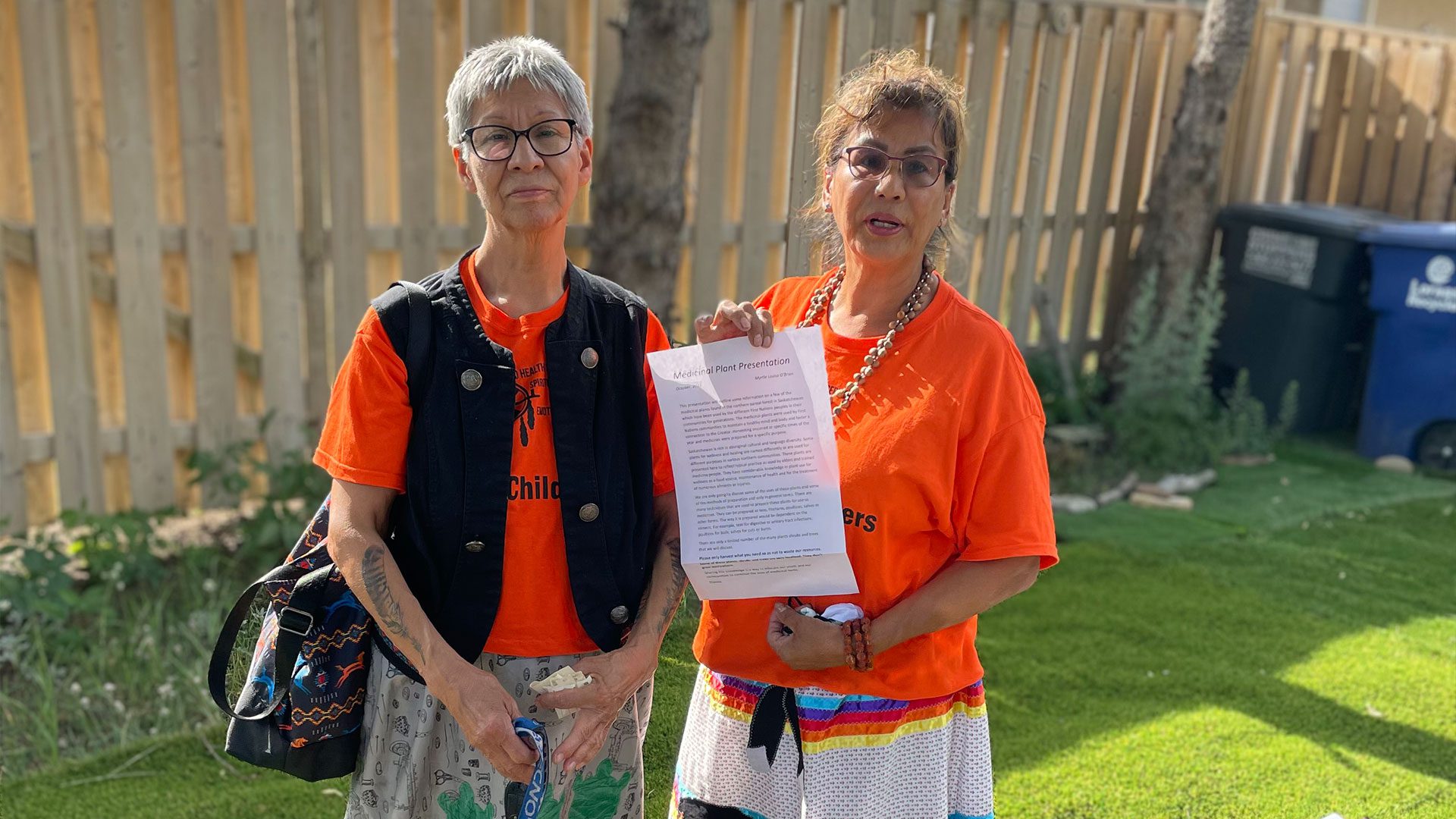Two sisters from northern Saskatchewan were passed the knowledge of traditional medicine.
Hawk Caribou now lives in the city of Saskatoon and her sister Myrtle “Moe” O’Brien is visiting her from LaRonge, Sask.
The sisters are Cree from the Wapaskokimaw First Nation (Peter Ballantyne Cree Nation) which shares land with Sandy Bay, a village in northern Saskatchewan located 578 kms north of Saskatoon.
They were taught traditional medicine from their mother and other family members.
The knowledge of traditional medicine has been in their family for many generations.
“My sister and I would like to honour and give thanks to my late mother, Agnes Morin, who passed away,” Caribou says. “She was the one who always told us about the medicines.”
Their mother managed to keep her language and traditional medicine knowledge even though she went to residential school.
“She taught the language, the medicines and my mother was a residential school survivor. She was actually beaten up to stop speaking her language and practicing her culture,” says Caribou.

Sister’s Traditional Medicine Knowledge Keepers
The sisters took APTN News on a tour of Saskatoon to identify traditional medicine that is literally in our backyards.
Caribou tells us about the white willow.
“You can use the leaves, but where the most potent medicine is in the inner bark and like I said I don’t want to disturb this plant because we are in an urban setting,” says Caribou.
The bark is very potent she says.
“In the spring you can easily peel it back and you can dry the bark, you can make it into powder and use it as a painkiller. The inner bark of this white willow is what is used for aspirin.” says Caribou.
Many of the medicinal plants can be found in the northern boreal forest.
Caribou says the White Willow can be used if you have the flu and can be prepared several ways.
“You can just put the bark in a tea like boil the water then let it steep for twenty minutes, Then you have liquid aspirin,” says Caribou.
There are many techniques that are used to prepare these plants as medicine she says.
They can be prepared as teas, tinctures, poultices, or salves with spruce and other plants.
O’Brien says this salve is used for eczema, arthritis pain and it’s made out of the spruce salve.
“I have a little bit here, it’s really good for bed sores especially,” O’Brien says.
O’Brien doesn’t sell her spruce salve in the stores only to people who she knows.
Both sisters have been passing on the knowledge to people by offering workshops and going into the classrooms. They don’t want the knowledge to be lost.
“I go to schools and I do herbal walks. I also teach them how we do the harvesting and the packaging right from the forest and we do the drying process and the packaging,” says O’Brien.
The sister’s only harvest what they need and they are both open to teaching people their knowledge.










